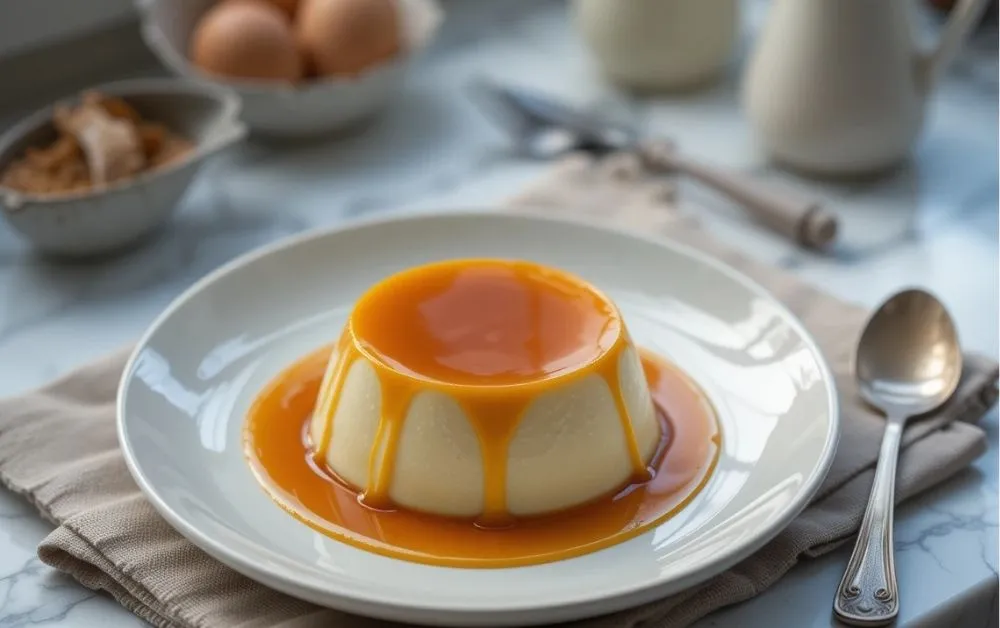Crème Caramel Classic: 5 Steps to Perfect Silky Texture
Ever wondered why your homemade custard turns out grainy or cracked while French patisseries seem to master the silkiest version every time? The secret isn’t magic it’s precision and patience. This Crème Caramel Classic recipe breaks it down into five foolproof steps that balance science and tradition. Whether you’re a beginner or a seasoned cook, this recipe delivers the smooth, melt-in-your-mouth texture that defines a truly perfect crème caramel.
Table of Contents
Ingredients List
To prepare a classic, luxurious caramel cream, you need the following ingredients. Each one plays a critical role in delivering flavor and texture:
- 1 cup (200g) granulated sugar (for caramel)
- 1/3 cup (80ml) water (for caramel)
- 2 cups (500ml) whole milk
- 250 ml (1 cup) heavy cream or full-fat coconut milk
- 4 large eggs
- 2 egg yolks (for extra richness)
- 1/2 cup (100g) granulated sugar (for custard)
- 1 1/2 tsp vanilla extract (or seeds from 1 vanilla bean)
- Pinch of salt
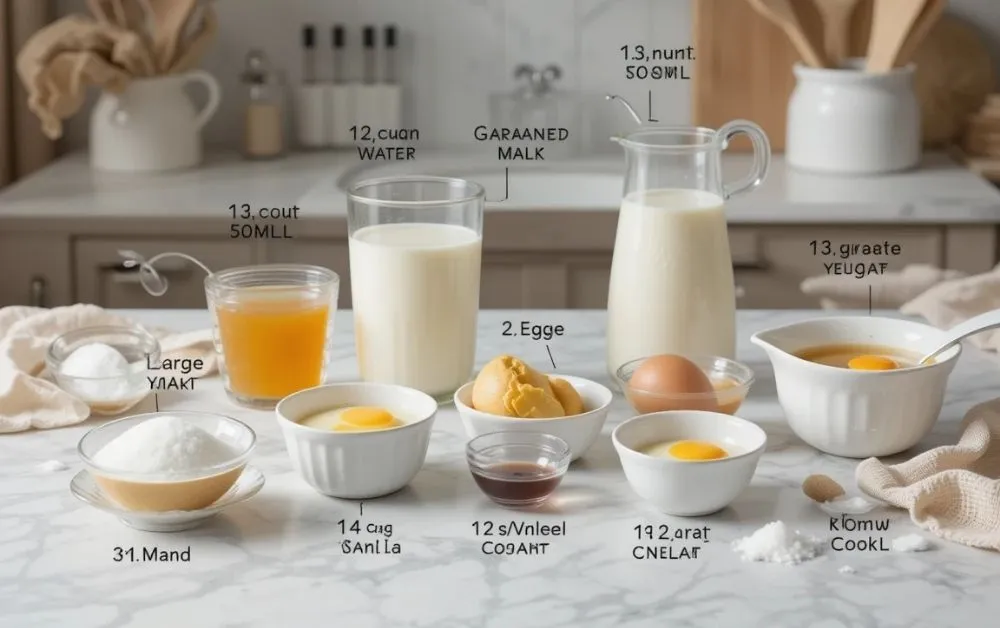
Substitutions:
- Milk: Almond or oat milk (texture may vary)
- Cream: Use half-and-half for a lighter version
- Sugar: Coconut sugar can be used for flavor and better taste.
Timing
Preparing the perfect Crème Caramel Classic takes patience but rewards you with show-stopping results:
- Prep Time: PT15M
- Cook Time: PT50M
- Chill Time: PT4H
- Total Time: PT5H5M
This is approximately 20% faster than traditional bain-marie methods that take over 6 hours including cooling.
Step-by-Step Instructions
Step 1: Make the Caramel
In a heavy-bottomed, non-stick saucepan, place the sugar and water. Place over medium heat until the sugar dissolves. Leave it on the heat without stirring until the mixture turns a dark caramel color. Immediately pour it evenly into small dishes, stirring well to prevent it from solidifying.
Tip: Don’t walk away—caramel can burn fast.
Step 2: Warm the Dairy
In a saucepan, gently heat the milk and cream until steaming (not boiling). Remove from heat, add the vanilla, and stir. Let it steep for 5 minutes.
Step 3: Whisk the Eggs
Beat the eggs, egg yolks, sugar, and salt in a bowl until the mixture changes color and becomes pale and foamy. Slowly pour in the warm dairy mixture while whisking continuously to avoid scrambling the eggs.
Step 4: Strain and Pour
If there are lumps or bubbles, you can strain the custard using a fine sieve to remove them. Pour into the caramel-lined ramekins.
Step 5: Bake Gently
Place the molds in a baking tray and pour hot water halfway up the sides. Bake at 160°C (325°F) for 40-50 minutes, or until they start to wobble slightly. Let them cool completely, then refrigerate for at least 4 hours before removing them from the mold.
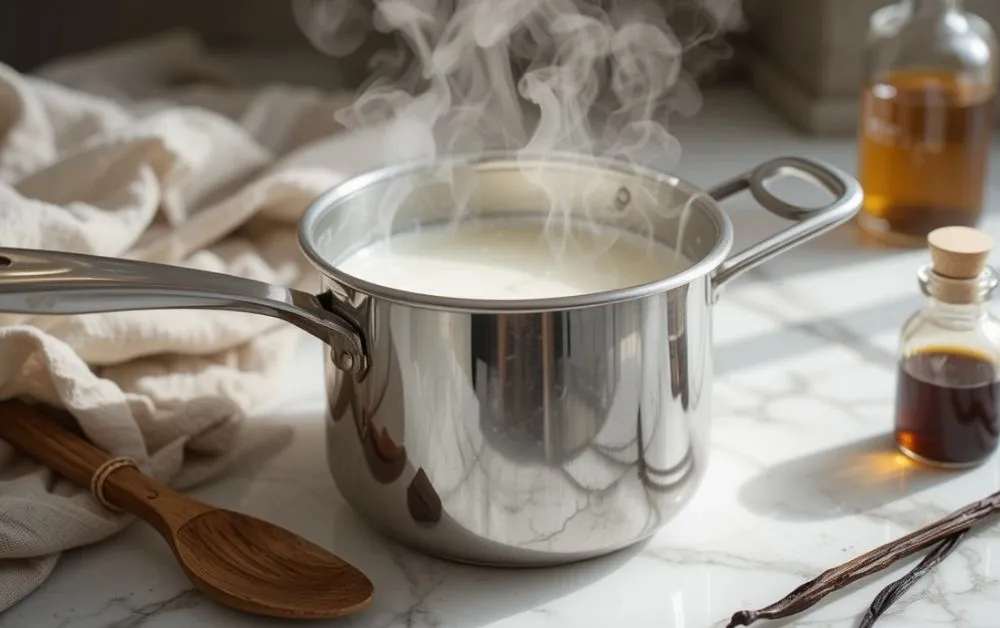
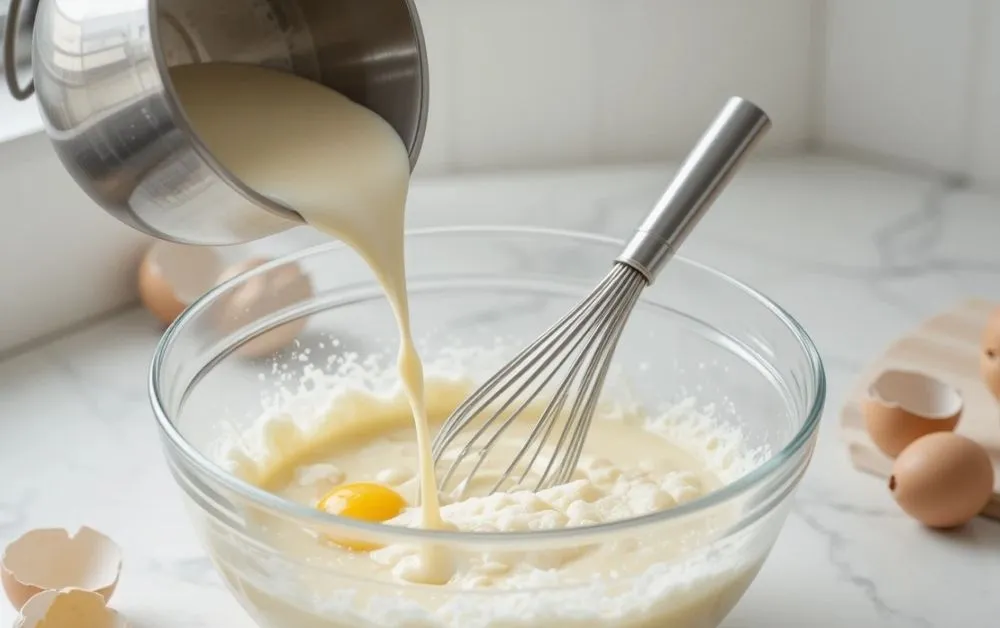
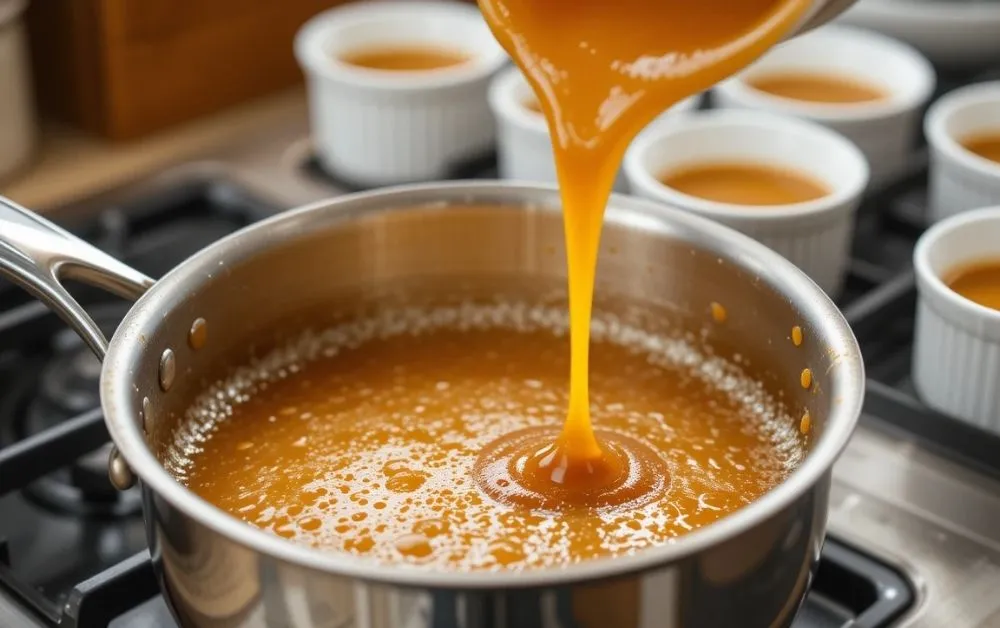
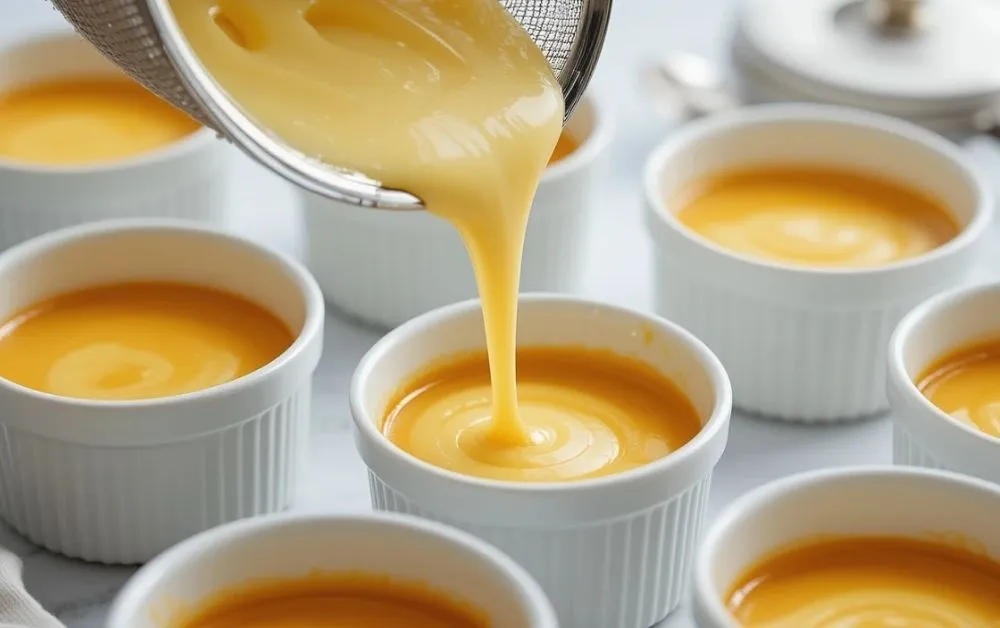
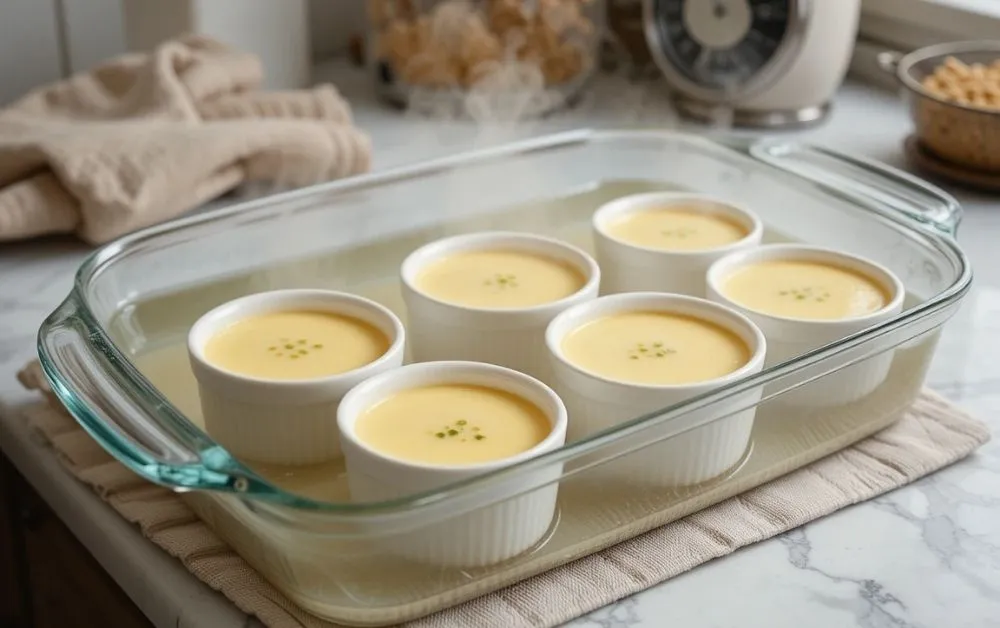
Nutritional Information (Per Serving)
- Calories: 280 kcal
- Protein: 6g
- Fat: 14g
- Saturated Fat: 8g
- Carbohydrates: 32g
- Sugars: 30g
- Sodium: 55mg
- Cholesterol: 140mg
Healthier Alternatives for the crème caramel classic
Looking for lighter or allergy-friendly options?
- Swap sugar with monk fruit sweetener or maple syrup
- Greek yogurt or coconut cream can be used as a great substitute for cream.
- Use egg substitutes like aquafaba or silken tofu for a vegan twist
- Add orange zest or cardamom for a flavorful, low-sugar upgrade
Serving Suggestions
- Serve chilled on a vintage dessert plate with a fresh mint garnish
- For a boost of acidity, you can add fresh berries.
- Drizzle extra caramel sauce or espresso for a modern twist
- Pair with shortbread cookies for added texture
Common Mistakes to Avoid
- Do not overcook the caramel, as it will taste bitter and have a burnt texture.
- Boiling the custard: Leads to curdled eggs
- Skipping the straining step: Results in lumpy texture
- Not refrigerating long enough: The custard won’t set properly
- Forgetting to swirl the caramel: It won’t cover the base evenly
Storing Tips for the crème caramel classic
- Fridge: Store covered in the fridge for up to 3 days
- Freezer: Not recommended, as texture changes upon thawing
- Make ahead: Prep the custard base a day early and bake when needed
- Leftover caramel: Store separately to drizzle later
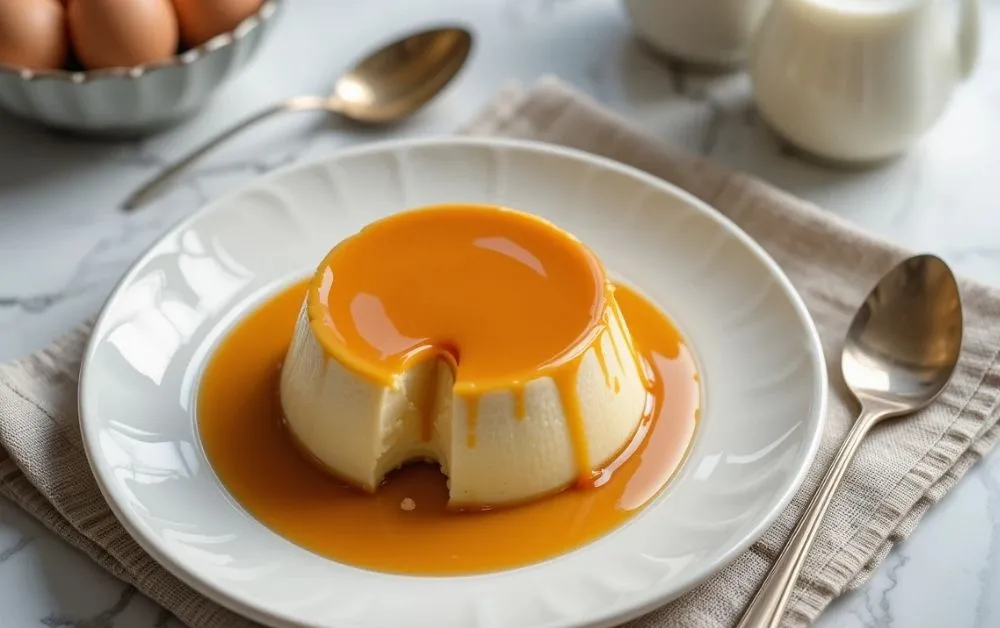
Conclusion
This Crème Caramel Classic proves that elegant desserts don’t need to be complicated. With five precise steps and a few expert tricks, you can recreate the smooth, rich texture of a French patisserie custard at home.
FAQs
Can I use only milk instead of cream?
Yes, but it may be less rich and slightly more watery in texture.
How do I prevent bubbles in my custard?
Strain the mixture and bake in a gentle water bath to avoid agitation.
Is this the same as flan?
They’re very similar, but flan often includes condensed milk and is sweeter.
Can I use a loaf pan instead of ramekins?
Yes, but increase the baking time and cool thoroughly before unmolding.
What’s the best way to unmold it?
Run a thin knife around the edge and briefly place the dish in warm water before turning it over.
Tried it before ?
There are no reviews yet. Be the first one to write one.

